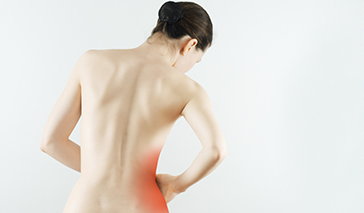Ureteropelvic junction obstruction occurs when the connection between ureter and kidney is narrowed, or blocked completely. Normally, the ureter, a long tube that carries urine from the kidney to the bladder, begins in the kidney with a funnel-like structure called the renal pelvis. Ureteropelvic junction (UPJ) obstruction occurs when this connection between ureter and kidney is blocked or narrower than usual. When this occurs, urine builds up behind the obstruction. This can lead to swelling of the kidney (hydronephrosis) and, left untreated, may cause severe damage to the organ.
Causes of Ureteropelvic Junction Obstruction
Most cases of UPJ obstruction are congenital, which means they happen while a baby is still in the womb, and can often be detected during a prenatal ultrasound. The blockage is usually caused by a narrowing of the connection between the ureter and the renal pelvis of the kidney, but can also develop when a blood vessel is not situated properly above the ureter.
UPJ obstruction is the most commonly diagnosed cause of urinary blockage in children, occurring in 1 out of every 1,500 live births. Boys are 3 to 4 times more likely than girls to have a congenital UPJ obstruction.
This condition also occurs, although less often, in adults. A blockage of the junction between the ureter and kidney can appear during adulthood as a result of scar tissue or inflammation from a previous surgery, urinary tract infection or kidney stones. Sometimes, people born with this condition are just not diagnosed until years later.
Symptoms of Ureteropelvic Junction Obstruction
A ureteropelvic junction obstruction can be asymptomatic, but when symptoms do occur they include:
- Pain in the lower back and side (flank) of the torso
- Blood in the urine (hematuria)
- Lump in the abdomen (abdominal mass)
- Infection in the kidney or urinary tract, often with a fever
- Vomiting
- Poor growth in infants (failure to thrive)
Diagnosis of Ureteropelvic Junction Obstruction
Left untreated, the buildup of pressure and urine caused by UPJ obstruction can severely damage the kidney. That treatment doesn't necessarily require surgery, however. Urologists use the following tests to determine how well the kidneys are working, and what treatment--if any--is required:
- Blood urea nitrogen (BUN) measures a compound (urea nitrogen) in the blood made during the breakdown of proteins. Urea nitrogen is a waste product and the kidneys get rid of urea nitrogen (a waste product) in the urine. But if the kidneys are not working properly, the compound will build up in the blood.
- Creatinine clearance measures how well the kidneys filter the blood—specifically creatinine, a breakdown product of muscle contraction.
- Electrolyte levels (such as sodium, potassium and calcium) in the blood are partially controlled by the kidneys. These electrically-charged minerals play a role in nerve and muscle performance, the body's hydration, blood acidity (pH), blood pressure, among other things. An imbalance can indicate a problem with kidney function.
- CT scans, a type of imaging test, are used to look for swelling of the kidney or a blockage of the renal pelvis.
- Intravenous pyelogram (IVP), a special type of X-ray, shows how well the kidneys filter an iodine-based dye injected into the bloodstream.
- Voiding cystourethrogram, X-rays taken while the patient is urinating, shows whether urine is flowing normally through the urethra and bladder. During this procedure, a catheter is inserted into the urethra and up to the bladder. A contrast dye is injected through the catheter, and X-rays are taken while the bladder is full and as the patient empties his bladder.
Treatment for Ureteropelvic Junction Obstruction
The main treatment for UPJ obstruction is surgery, but a patient's treatment plan depends upon the severity and nature of the blockage. Read our in-depth article on ureteropelvic junction obstruction treatments to learn more.
References
Nakada S.Y., & Hsu T. Management of Upper Urinary Tract Obstruction. Campbell-Walsh Urology, 10th. ed. 2011. Chpt 41. Vol. 2.
UPJ obstruction. A.D.A.M. Medical Encyclopedia. 2011.


